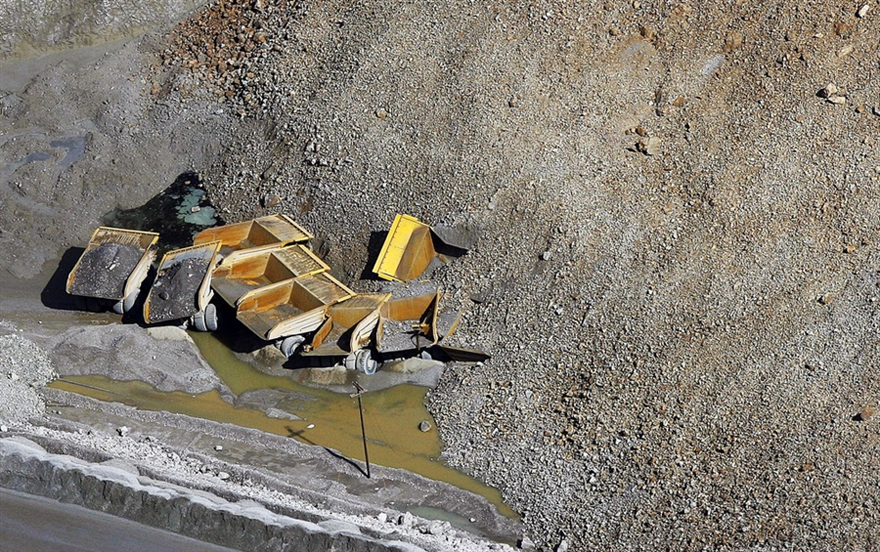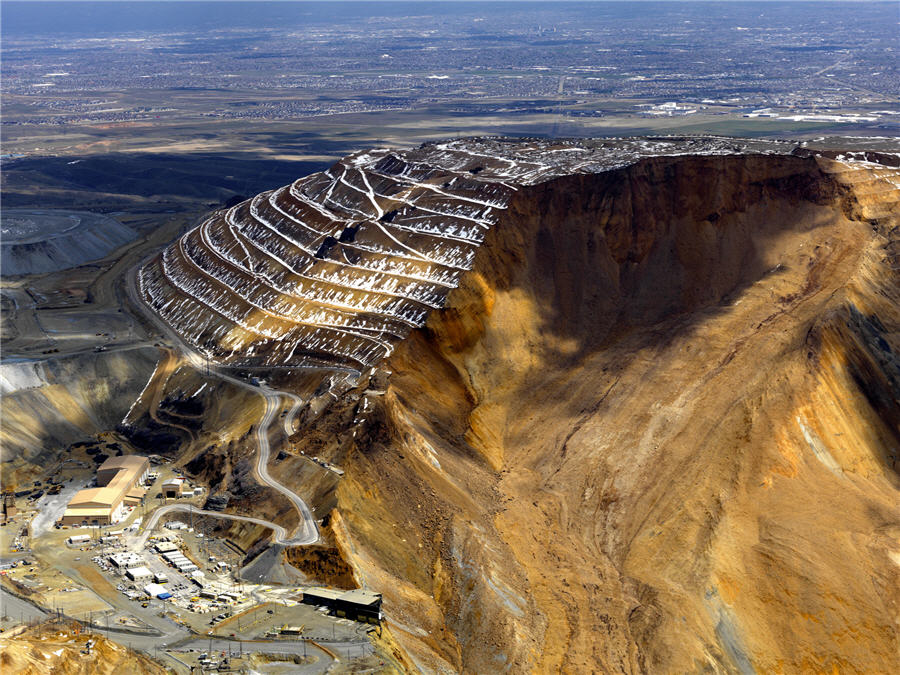This article first appeared November 2019
MINING.com tours Rio Tinto Kennecott’s Bingham Canyon mine 18 months after the largest non-volcanic landslide in history

Source: Deseret News

Bingham Canyon, 30 miles south of Salt Lake City, Utah has been mined since 1906. The mine has produced more copper than any mine in history – more than 19 million tonnes. At peak production represents 25% of total US copper production. World number two miner Rio Tinto bought Kennecott in 1989 and has invested more than $2 billion in modernizing the mine and another $450 million to clean up historic workings and ground water. This picture from the Library of Congress dates back to November 1942.

Today what was a mountain 108 years ago is a pit more than than three-quarters of a mile deep (that’s more than 200 stories high) and more than two and three-quarter miles wide across the top. The elevation of the mine drops from 8,040 feet to 4,390 feet above sea level. If you stretched out all the roads in the open-pit mine — some 500 miles of roadway — you’d have enough distance to reach from Salt Lake City to Denver.

On April 10, 2013 at 11:00 in the morning all employees are evacuated from the bottom of the pit after ground probes and radar monitoring equipment detect slope deformation increasing from 1mm a day to 5mm day. At 9:30 that same evening a slide along a geotechnical fault-line of the mine’s northeastern wall occurs followed by another 90 minutes later. An astonishing 160 million tonnes of material is moved by the avalanche with the rock moving at estimated speeds of 70 – 100 miles per hour. It’s the largest “man-made” landslide ever recorded.

The haul truck maintenance building (think more aircraft hanger than work shop) is sliced nearly in half by the slide, the pit access road disappears and 13-haul trucks are buried. The bottom of the pit is covered in debris nearly 200 feet deep. The two slides cause the equivalent of magnitude 5.1 and 4.9 ‘quakes’ and results in 16 smaller ‘aftershocks’.

Haul truck drivers ride about 18 feet above the ground thanks to 12.5 feet tires (that don’t last more than nine months and cost upwards of $20,000). The trucks are about the same size as a two-story townhouse. This image of that same truck work shop in 2010 is by Rawhead Rex.

Crews were back on the site three days after the slide to remove waste rock. Six millions tonnes of dirt is hauled are to build a new access road so that mining can resume. The task was completed in October last year, seven months ahead of schedule and limited output losses to 50% of capacity.
Haul and water trucks always have right of way and you quickly understand why. The 320-tonne haul trucks are shipped to the mine in pieces and assembled on site. 10 of the buried haul trucks have been recovered and five, put together from parts of different trucks, are back in service.

When fully loaded, a haul truck weighs more than 1.1 million pounds. Kennecott also uses seven haul-sized water trucks with 50,000-gallon tanks. These trucks constantly spray water onto roads to reduce dust, Bingham Canyon’s number one environmental impact.
Despite the disruption, in 2013 the mine produced 213,000 tonnes of copper, 192,300 ounces of gold, 2.2 million ounces of silver and 6,300 tonnes of molybdenum, using giant machines like this shovel and a fleet of more than 100 haul trucks.

From this in-pit crusher the ore is moved by conveyer belt, partly through a tunnel, to the processing plant. Rio Tinto is currently working on studies to extend Bingham Canyon’s life to 2029, including expanding operations underground after the discovery of a high-grade copper-gold skarn deposit located approximately 300 metres below the open pit.

The Bingham Canyon Concentrator plant. Due to the landslide some 170 workers took early retirement and another 40 were laid off or transferred elsewhere in Rio Tinto including Kelly Sanders, Kennecott CEO and President.
This image of the copper smelter and tailings infrastructure is from the mine’s new Virtual Visitors Center. I also got to try Kennecott’s virtual reality experience (in beta at the moment) using an Oculus Rift head-mounted display. It places you right in the middle of the action and is almost more immersive than being there in the flesh! The Visitors Center and outlook point was closed and parts of the structure moved ahead of the slide. The facility generated $2.8 million for its charitable foundation and received more than 3 million visitors since 1992.

My tour guides from left to right: Trevor Heaton, environmental engineer, Nate Foster, mine manager and Kyle Bennett, Rio Tinto Kennecott spokesperson. Thanks guys!
Images by MINING.com and Kennecott Rio Tinto unless otherwise specified. Thanks to Deseret News for use of their image.


